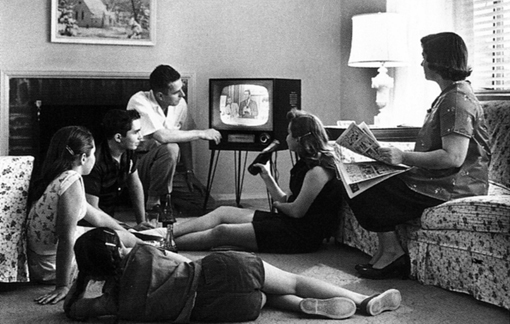Feature Films on British Television in the 1970s
Over the next few years a great many ‘vintage’ as well as relatively recent films were released for the first time to television. But even by the early 1970s the supply of titles considered suitable for TV was running out and by the end of the decade most of those shown on all three channels were reruns; the bulk of those older films that remained unscreened were regarded as too dated or too minor to be worth reviving and many of the newer films were unacceptable for a family (or even adult) audience. So although the number of films transmitted increased more-or-less year on year, the number of premieres declined in both real and relative terms and, from 1972 onwards on the BBC, was significantly exceeded by the number and proportion that were repeat showings. From about that time onwards also, the BBC and ITV acquired and screened an increasing number of films that had already been shown by the rival channel in order to increase the supply of suitable product.
The need to acquire films when they became available was dictated partly by competition… and partly by the need to accumulate increasingly scarce resources…
The Constraints
Aside from the CEA-imposed ‘five-year’ rule (which the broadcasters were loath to accept although in most circumstances they had little choice but to do so) the BBC and ITV operated within a number of other constraints, some of them self-imposed. I’m drawing here particularly on documents internal to the BBC (especially a report on stock policy prepared in 1972) and the Independent Broadcasting Authority (the IBA).
It was BBC policy to acquire all those suitable films that were available to it, subject to limits on the maximum value of the stock (not to exceed more than about £5 million) and with the proviso that at any one time the number of films available for first transmission should not exceed 450 – reckoned to be about two years’ supply, though in fact by the end of the decade it was equivalent to more than three years’ worth. The need to acquire films when they became available was dictated partly by competition – if the Corporation didn’t buy them, ITV would – and partly by the need to accumulate increasingly scarce resources (especially where premieres were concerned). Films were purchased – or rather, leased for a fixed period and usually for a specified number of screenings (typically three or four times over five or seven years, though this could vary even among the films in a single package) – by a team led by Gunnar Rugheimer, Head of Purchased Programmes, a Canadian and a notoriously combative personality. Members of this team also helped with scheduling or ‘placing’ the films, though the Controllers of BBC1 and BBC2 had ultimate say over which films appeared in which slots. The BBC imposed an approximate limit of 12% on the proportion of its output devoted to ‘foreign’ (including American) programming. This included acquired series as well as films, so the number of features that could be screened was controlled partly by the number of bought-in series that were transmitted. Typically throughout the 1970s an average six to eight films were shown in a normal week (more in holidays), divided between the two channels, with BBC1 showing slightly more than BBC2 until 1979, when the balance shifted the other way.

National Archives and Records Administration.
Stricter controls were imposed on ITV, partly by its regulatory body, the IBA, and partly by various agreements with the showbusiness talent and craft unions. It is worth emphasising that ITV was not one channel but 15 companies which held the local franchises for 14 regions (London being split between two companies, Thames and London Weekend). Most films were shown on a local basis, with relatively few films fully ‘networked’ (i.e. shown simultaneously across the whole country) or even part-networked (though two or more stations often linked up for the showing of particular films). Films were bought on behalf of the companies by the Network Purchase Group, comprising representatives from the five largest companies and a single representative acting for the remaining nine. But the work of seeking out and negotiating film and series acquisitions was largely done by one person, Granada’s film scheduler Leslie Halliwell, whose proposed deals had to be ratified by the group. Once acquired, films were put into a ‘pool’ that could be drawn upon by each company according to its scheduling needs – and there was considerable variation in the number of films shown by each station. Companies could opt out of particular purchases if they wished, and conversely they could also acquire their own, for local use only – Halliwell did this a good deal for Granada, buying many older films that did not interest schedulers in other regions. Wherever they operated, companies were limited to a maximum number of features weekly (again except for holidays). At the start of the decade this was five, subsequently increased (as broadcasting hours were extended) to six and then seven, of which no more than four per week – averaged across a quarter – could be British. This was to placate the unions, which feared that a reliance on old and already-completed films (and shows) would mean less work for their members. There were also restrictions on how films could be placed in the schedules – two or more were not usually permitted to run consecutively, in order to ensure programme variety – and safeguards on content and age suitability (of which more later).
 Learning on Screen
Learning on Screen